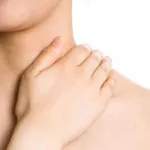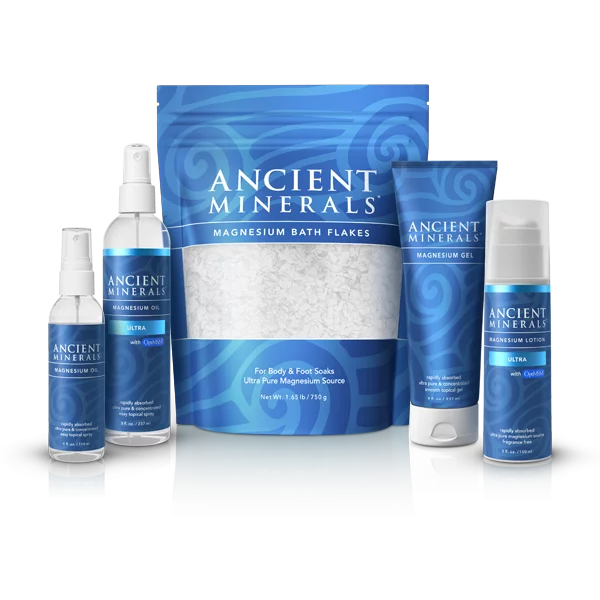Topical magnesium, a method of delivering minerals to the body through the skin, may seem at first mysterious and new, but it’s based on both age-old principles and cutting edge science.
Have you ever used a patch to help you quit smoking, or to alleviate pain? What about Ben Gay? Or how about that expensive skin creme you bought to help give your skin a healthy glow?
If you’ve used or are familiar with any of these products, then you are familiar with the basic concepts behind topical applications of magnesium.
How is topical magnesium absorbed through the skin?
The skin, the largest organ of the body, has three primary functions:
- Temperature control
- Detoxification
- Barrier function
While one function of the skin, its barrier function, is to keep water and moisture in while keeping germs and toxins out, the skin’s other functions, temperature control and detoxification, could not occur if the skin was truly a complete barrier.
When you sweat, for example, you are both controlling your body’s temperature and naturally excreting toxins through your skin. If you can push out toxins, you can pull them in as well. One example of this phenomenon is that fact that a person who regularly uses underarm deodorant containing aluminum will actually show aluminum content in a fecal or urine test.
A Definition of Dermal Absorption
In fact, many substances do pass into the body from the outer surface of the skin and into the circulation. To understand how this works, imagine a tightly woven fabric. While from a distance it may appear impervious, at close range it is actually highly porous. It is this porous nature of the skin, with its millions of tiny openings, that allows not only sweat and other toxins to escape, but also enables the absorption of some substances.
The process is known as dermal absorption. Once a substance passes through the outer layers of skin, it passes into the lymph and local vascular (blood vessel) system and soon after into the bloodstream. 1


While the exact mechanisms of skin transfer are yet to be completely understood, three routes of penetration have been hypothesized:
- Intercellular Skin Absorption, which occurs between the cells of the “stratum corneum”, the outermost layer of the skin
- Transcellular Skin Absorption, where substances actually pass through the skin cells themselves
- Skin Absorption Through the Follicles and Glands, also known as ”appendageal absorption”, which may also exhibit ”reservoir effects” in which substances may be stored within the glands for absorption over time
Skin Permeability: The Good and The Bad
Some of the most convincing stories of substances passing into the body via the skin come from governmental agencies actively studying and monitoring dermal absorption through their chemical safety divisions.
A 2005 report published by the World Health Organization takes a very clear position on skin permeability:
While the skin does act as a barrier, it is not a complete barrier. Many chemicals do penetrate the skin, either intentionally or unintentionally, and cutaneous metabolism does occur. Because of its large surface area, the skin may be a major route of entry into the body in some exposure situations.”
This “major route of entry” has become a concern in many circumstances where toxic substances are released into air, water, and even city water supplies.
- The California Environmental Protection Agency issued a report entitled “Chlorinated Chemicals in Your Home”, warning of the risks of cancer due to chlorinated chemicals. The agency issued the statement: “Taking a long, hot shower in a typical small shower stall can substantially increase your exposure to chloroform. If you use indoor spas, hot tubs, or swimming pools, you are also likely to be exposed to high levels of chloroform.” 2
- Health Canada has estimated that skin exposure to certain toxic hydrocarbons in the Great Lakes may be as dangerous as oral exposure, issuing alerts to bathers, especially those affected by sunburn, which may enhance absorption. 3
- Worker safety is an issue. Workers in various industries have suffered poisoning, in some cases fatal, from substances penetrating exclusively through the skin and into the bloodstream, such as through dermal exposure to leaded gasoline and insecticides. 4
- The European Commission and the World Health Organization have both issued Guidance Documents, such as the “Guidance Document on Dermal Absorption” and International Programme on Chemical Safety Environmental Health Criteria serve to instruct agencies on how to protect workers from exposure to toxic compounds.
While government agencies such as those above work to stop the transfer of chemicals through the skin, transdermal drug delivery methods seek to take advantage of it. Transdermal patches are produced as delivery systems for nicotine, hormones, pain killers, and others.
These methods are coveted for their clear advantages over oral medications, as outlined by Stanley Scheindlin, pharmaceutical chemist, in the journal Molecular Interventions:
Patients often forget to take their medicine, and even the most faithfully compliant get tired of swallowing pills, especially if they must take several each day. Additionally, bypassing the gastrointestinal (GI) tract would obviate the GI irritation that frequently occurs and avoid partial first-pass inactivation by the liver.” 5
While transdermal drugs are well known in the medical community, the difference with magnesium oil topical treatments is, of course, the fact that magnesium is an essential mineral to the human body, in a natural form. Thus, use of topical magnesium oil products brings all the advantages of transdermal applications, but none of the disadvantages of introducing foreign substances into the body.
Transdermal magnesium is a needed substance. While the chemicals in transdermal pharmaceuticals are actively filtered, inactivated, and excreted by the body’s detoxification systems, magnesium is welcomed and actively taken in by the cells.
What is the history of transdermal delivery?
Humans have been using the skin as a direct pathway into the body for centuries, and only recently have we begun to understand the science behind it.


Ancient treatments in fact involved a variety of transdermal therapies ranging from mineral baths, to herbal compresses, to mud packs, to steam and sweat lodges. These topical remedies were not limited to one culture, but were a part of many of the documented societies spread throughout the world.
- In Homer’s Odyssey he frequently mentions the bathing habits of his heroes, drawing repeated attention to the significance of the deed. In the tenth century Paul of Aegina, a great physician, discusses balneology in a medical text, specifically detailing various forms of mineral waters for different ailments.
- The city of Bath in England took its name from the hot mineral springs it contains. The traditional tale of its origins told of how the son of an ancient king contracted leprosy. After he was banished from the palace he found the mineral waters in Bath and returned miraculously healed of the disease.
- When Ponce de Leon and Hernando DeSoto sought the “Fountain of Youth” in the new world, many speculate that the exaggerated tales that arose referenced the healing properties of a mineral-dense geothermal spring. Prior to commercialization, these same hot springs were a place where the native Indian populations would bring their sick or wounded, and would fight viciously to protect what they felt was sacred ground.
More recent examples of topical and transdermal therapies can be found from the 18th through the early 20th century and eventually led to the technological advancements seen today. Throughout Europe, the skin as a gateway for medical therapy became increasingly popular in the late 18th century. In an age where open wounds often led to infection, topical remedies were favored over risky surgeries. For instance, soaking in sulfurous mineral baths became a widespread treatment for gout, which might otherwise have meant amputation.
Early editions of the United States Pharmacoepia (USP) contained several plasters, pastes applied with a cloth binding cover, which are precursors to current transdermal patches. Similarly, herbalists utilize compresses and ointments based on the healing properties of plants.
In the same way that modern science has not only verified but also capitalized on traditional knowledge of the power of herbs and plant constituents, ongoing studies today explore the mechanisms of skin absorption, gradually confirming the practices of healers from before written history.
Are there studies on topical magnesium intake?
Documented research on the effect topically applied magnesium chloride has on blood chemistry includes the work of Dr. Norman Shealy, M.D. Ph.D. Founder of the American Holistic Medical Association, Dr Shealy enlisted sixteen individuals with low intracellular magnesium levels.
Participants were instructed to perform a 20 minute foot-soak with magnesium chloride flakes, in addition to spraying their entire body once daily with magnesium oil. After just four weeks of foot soaking in magnesium chloride, 75% of participants showed a very significant increase in their cellular levels of magnesium. 6
A second study, conducted by Dr. DH Waring at the University of Birmingham, demonstrated that a 1% solution of magnesium sulfate in a warm bath had immediate effects on serum levels of magnesium. 7
Finally, a study in Poland specifically addressed the issue of ion diffusion through the skin. Using ion chromatography, researchers demonstrated in vitro that the metal cation magnesium can in fact diffuse through the skin.
These Polish researchers found evidence for multiple routes of absorption:
Diverse influences… on the grade of metal ion permeability suggest the presence of different routes of ions penetration through the skin. It is also supported by different transportation characteristics of individual ions through the skin over time.” 8
Notably, the concentrations explored in this study were only low level atmospheric concentrations, compared with the much higher concentrations typically employed in therapeutic applications of topical magnesium oil.
There is also no shortage of positive reports from medical professionals and consumers regarding the health benefits achieved from using magnesium chloride topically. Many of these reports describe immediate and profound impacts on health through the use of topically applied magnesium chloride, and frequently come from individuals whose oral dosages of various magnesium compounds have previously fallen short of their expectations.
Can I increase the total skin absorption of topical magnesium oil?
There are a number of factors that increase the amount of magnesium oil absorbed through the skin. They include:
- Increasing the area of application
- Increasing the amount of time the application is left on the skin
- Increasing the frequency of application
- Varying the location of application, with areas such as the scalp and armpits exhibiting higher rates of absorption
- Increased temperature of the area of application
- Well-hydrated skin
Individual choices will vary based upon preferences and individual response. Consult our Guide to Magnesium Application for more information.
Why use topical magnesium oil when there is magnesium in food?
Though it’s possible and preferable to get magnesium from a variety of sources, studies show that most Americans have magnesium deficient diets, with one in five getting less than half the RDA for magnesium in their daily diets. 9
Oral supplementation, on the other hand, is affected by numerous things in your gut – no matter what type of oral magnesium you use. Because all magnesium taken orally is potentially laxative, the ability to absorb magnesium through the GI tract is limited by shortened transit time.
Oral magnesium can be inconvenient as well, due to the amount needed for adequate dosage. Adequate magnesium is typically not added to multi-vitamins in an attempt to reduce the size and dosage, and magnesium supplements themselves can be large.
Considering these difficulties and the numerous factors that may negatively impact oral magnesium absorption in the GI tract, topical magnesium shows clear benefits.
A Cornerstone for Achieving Vibrant Health
From pain killers to anti-depressants to hormone replacement, countless people have turned to transdermal medicine, whether because they can’t swallow pills, their digestive systems are impaired, or simply due to personal preference.
Using magnesium transdermally addresses all of these concerns.
Topical magnesium:
- Is safe, convenient, affordable and effective.
- Allows you to maximize the amount you’re getting daily without having to worry about diarrhea, digestion, or swallowing additional pills several times a day.
- Is especially helpful with pain and can be applied directly to the trouble area with immediate results, rather than waiting for it to work its way through your GI tract.
So long as a molecule or ion is small enough to pass through the porous surface of the skin, it will eventually end up in your blood stream. Topical magnesium takes advantage of the absorptive properties of body’s largest organ, putting it to work for you in the form of a simple spray, soak, or massage.
The skin is a living, breathing organ — the most efficient organ for detoxification with tremendous potential for re-mineralizing the body. What happens when combine the human body’s most well functioning organ with one of the most life giving minerals available? A cornerstone for achieving vibrant health.


